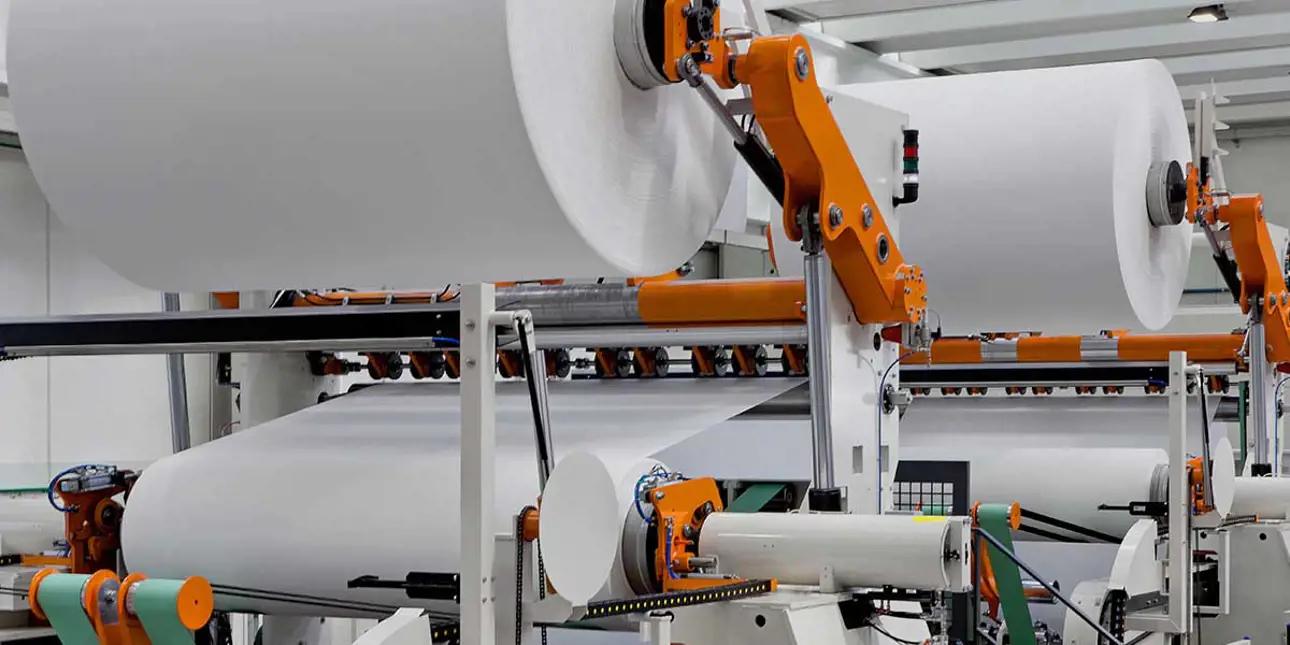Planned and unplanned downtime and its impact on tissue converters

Downtime can be a detriment for tissue converters, but it’s also necessary to keep production lines running at peak efficiency. The difference between hindrance and help is whether the downtime is unplanned or planned.
Planned vs. unplanned: what’s the difference?
The difference between the two is simple and rather obvious:
- Planned downtime is time specifically scheduled to address equipment performance, hardware/software upgrades, facility maintenance, tool breaks, inspections, and other necessary upkeep. Because planned downtime is anticipated it is also controlled in terms of time and money invested, as well as productivity and labor losses.
- Unplanned downtime is any unforeseen event that reduces return on investment by causing disruptions in quality, cost and cycle time. While usually framed in terms of an equipment event like poor maintenance or hardware/software errors, operator error/performance and/or slow changeovers could contribute to lost time and revenue because the tissue converting equipment isn’t up and available for production.
The major difference between the two is definitely evident in the bottom line. According to recent American Productivity and Quality Center (APQC) estimates, unplanned downtime accounts for a loss of anywhere from 40¢ to $1.20 on every $20 in revenue. This amount may seem insignificant but, extrapolated based on the revenue of a multi-million dollar tissue converting operation, the loss adds up quickly. Plus, over eight in ten manufacturing companies has had at least one unplanned event within the past three years, with most experiencing two.
The true cost of downtime
Recent data suggest 80% of industrial plants can’t accurately estimate downtime and, of those plants that can, downtime is under-calculated by up to 300%! To keep unplanned downtime from eroding performance and profitability, tissue converters must understand how the true cost of downtime is arrived at using a generally accepted formula of:
Downtime dollars = tangible costs + intangible costs
The “tangible costs” bucket encompasses lost revenue, decreased production capacity, idle employee time and extra costs associated with scheduling emergency repair crews.
The unseen “intangible costs” are not as easy to definitively calculate in terms of dollars and cents, but their toll on employees — and, in the larger sense, your business — can be quite costly. The stress involved in dealing with the fallout of a tissue converting production line crisis is enormous because every decision is split-second, and every minute of downtime is thousands of dollars lost. Over time, the reactivity of identifying and rectifying failures can chip away at employee morale, as can excess inactivity.
While there will still likely be the occasional unanticipated break or shutdown, aiming for a 75% mark in proactive maintenance is beneficial in keeping tangible and intangible costs low.
Regular planned downtime:
- Extends the useful life and efficiencies of tissue converting equipment
- Reduces production downtime and overtime costs since downtime is scheduled and planned for in throughput quotas
- Keeps budgets under control because ordering spare parts, scheduling maintenance/repair crews and reallocating production line labor to other tasks during downtime is predictable
- Provides regular intervals at which data can be gathered and analyzed to keep maintenance and production on track
- Increases employee happiness and customer satisfaction because tissue and towel orders are readily completed
How to manage downtime
Knowing what goes into true downtime cost and the potential adverse impact of those tangible and intangible factors on your profitability makes a strong case for using predictive and preventive maintenance (PPM). Achieving and sustaining PPM effectiveness — and therefore properly planning downtime — requires several key components:
- Understanding: The true cost of poor maintenance transcends equipment cost — downtime, loss of productivity and worker under-utilization multiplies the initial dollar amount several fold
- Commitment: The full organization, starting with management, must be fully focused on implementing PPM and eliminating counterproductive processes and actions
- Knowledge: In-depth learning and analysis of equipment and process conditions are required to meet quality, output, safety and compliance standards
- Consistency: PPM must be considered part of capacity planning and routinely scheduled to successfully maintain its three-phase cadence of issue detection, analysis and correction